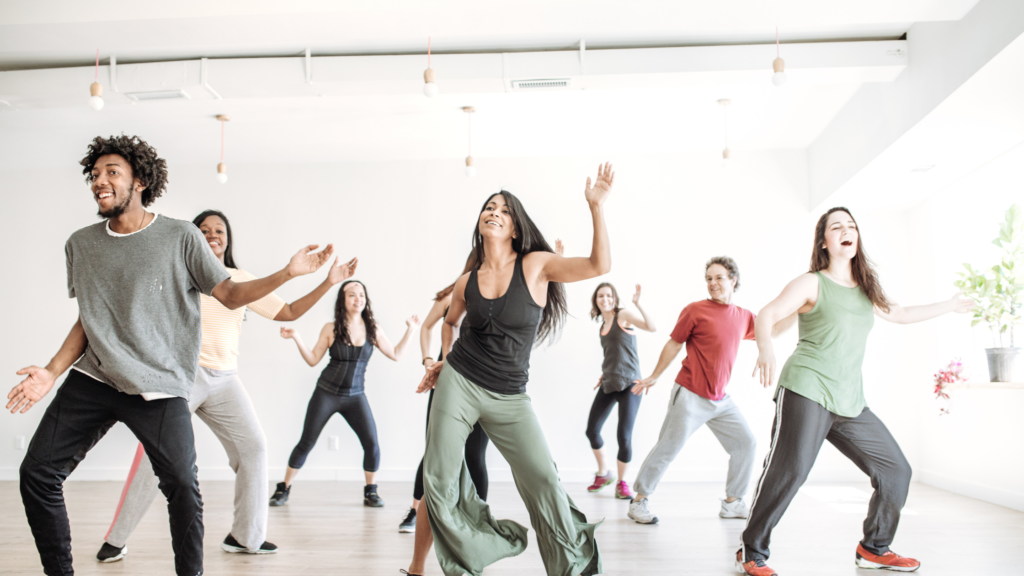When we think of how to maintain our well-being, we can automatically conjure mental images of our favorite rejuvenating activites. The thing is, many of us prefer to do our wellness practices alone. We might hit the gym, meditate in our bedroom, or listen to some spiritual podcasts through headphones. While there are definitely benefits to undertaking such practices on our own, there are many advantages to doing them in a group setting as well.
Healing Together

When we do activities with others, it can help to boost our social wellness. This, in turn, has a number of physical and psychological effects. For example, social interaction can help to lower blood pressure and levels of the stress hormone, cortisol. It also releases oxytocin which is sometimes referred to as the “cuddle hormone” or the “love hormone” because it plays a role in bonding and attachment. Oxytocin has been shown to reduce anxiety and fear, promote relaxation and sleep, and decrease pain perception. (source)
A huge benefit of doing wellness activities in groups is supporting and encouraging each other. If you have friends or family members who are also interested in living a healthy lifestyle, meeting up with them for walks, yoga classes, or healthy cooking nights can be a great way to stay motivated and on track. Furthermore, research shows that people who exercise with others tend to stick with it longer than those who go it alone. (source)
It’s also important to note how useful peer feedback is, because when we work together, we can benefit from each other’s knowledge of the activity and gain valuable tips on how we can improve. This can be especially important for the learning phase of skills.
Tips for getting the most out of group wellness:
- Don’t rely entirely on the availability of classes/others for you to practice. Life can be chaotic so if there has been a cancellation, be sure to engage in solo activity to keep up the positive habit.
- Do your research – there is an abundance of wellness classes and hangouts tailored to a world of different individuals. If you lack plentiful options in your area, consider searching for online groups.
- Don’t be discouraged – It can be easy to feel put off about an activity altogether if we had a bad experience, but know that there are always plenty of additional options. It could be as simple as trying the same thing elsewhere. Keep in mind that subtle elements such as the size of the space or a teacher’s personality can make all the difference.
Healing Alone

One main advantage of solo practice is that you can tailor it to your needs and preferences without having to take anyone else into account. If you’re a morning person, you can go for a run or do some yoga first thing without having to coordinate with anyone else’s schedule. We also don’t have to worry about keeping up with anyone else or feeling self-conscious about our abilities.
Another plus of going solo is that it can help us develop independence and self-awareness. Doing things on our own can spur us to implement new practices and build intuition about what we need in our lives. It can also help us learn more about our responses to different experiences without being blurred by ‘groupthink’.
If you get triggered by others or have experienced recent trauma, group activities such as meditation can have the opposite of the effect intended. In these cases, it’s important to listen to your body and do what feels safe for you. Knowing whether you need to practice in a private space can be integral to wellness and healing.
Tips for individual well-being ventures:
- Keep track – Recording your activity can help with motivation and keeping in touch with your well-being levels. Yours App offers a mood check-in feature that not only records your well-being but provides tailored content for your mood. There is a wealth of content for mind and body, including yoga, breathing exercises, as well as specific psychology videos. They have been kind enough to provide our readers with a 55% discount code for their yearly plan (plus a 7-day free trial).
- Keep an open mind – If a practice isn’t working out for you, it may just require some tweaking, such as changing the difficulty level. Try several avenues in order to get the most out of a practice but don’t be concerned if you wish to try something completely different.
- Consider mixing it up – as mentioned, there are many benefits to group well-being activities, so it can be helpful to try a combination of solo and together activities. If you are not a fan of big groups, try getting together with a trusted friend every now and then or even simply tell them about your well-being goals – it can go a long way.
So, what’s the best way to approach wellness? It ultimately depends on what works better for you and your unique needs. So stay flexible with your practices and mix them up appropriately. If you’re not sure where to start, why not try a good-sized combination of both options and see what feels best?
Ultimately, the most important thing is to find what works for you and stick with it. Experiment with different activities and settings until you find a routine that feels right.
Now its your turn to tell us what you think. Let us know in the comments!
- Healing Together vs Healing Alone – How Best to Approach Well-Being - June 15, 2022
- Modern Techniques For Next Level Wellness (Complete Guide) - March 18, 2020
- Healing Music – Break Unwanted Mental And Emotional Patterns With These Sounds That Soothe - November 16, 2018